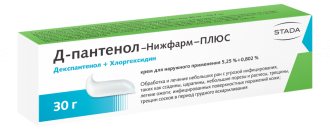Complications are typical for any surgical procedure, but the risks of their occurrence can vary significantly. First of all, the surgeon assesses the woman’s health status and identifies contraindications, which include:
- Inflammatory and infectious processes in the mammary glands.
- Diabetes.
- Pregnancy and breastfeeding period.
- Blood clotting disorder.
- Oncological diseases.
- Severe diseases of the liver, kidneys, lungs, heart, etc.
If breast augmentation is carried out in the presence of contraindications, the risks to the woman’s health and even life will be very high. In this regard, no surgeon will undertake such operations.
Complications in the early postoperative period
The most common early complications of breast augmentation surgery include:
- Hematomas and seromas. They develop as a result of accumulation of blood or wound discharge in the implant pocket. These complications are usually accompanied by severe symptoms, so they are not difficult to diagnose. Small hematomas and seromas go away on their own. In some cases, their puncture may be required. If you do not consult a doctor in time, such complications can lead to the breast becoming asymmetrical and painful, requiring removal of the endoprosthesis and its reinstallation.
- Infectious complications. When pathogens enter a wound, both pronounced and subclinical forms of infectious diseases can develop. They are usually manifested by fever, weakness, fatigue, and muscle pain. Treatment is usually conservative and consists of prescribing antibacterial drugs.
Local contraindications
These contraindications include the characteristics of the soft tissues of the breast that do not allow the installation of implants with an acceptable aesthetic result.
Most often, we are talking about very thin breast tissues that cannot sufficiently cover the implant, which leads to its visualization, i.e. the edge of the implant is visible, and ripples and folds are noted on the chest.
In such cases, installing implants under the pectoralis major muscle can sometimes be a salvation, but there is a small category of patients for whom this does not help either. In such cases, it is better to refuse surgery.
In any case, it is necessary to remember that contraindications for surgery are set by the doctor. The patient’s task is to fully inform her surgeon about her diseases. With this approach, the likelihood of complications approaches a minimum.
Long-term postoperative complications
Several months after surgery, some women may experience the following complications:
- Reduced sensitivity up to its complete loss. Usually there is a temporary loss of sensitivity in the nipple area. This complication develops as a result of damage to small nerve fibers that are located in the skin. Sensitivity usually returns after a few months, without any medical help.
- Implant displacement. It develops as a result of violation of the rules of conduct during rehabilitation, in particular, violation of the regime of wearing compression garments, or as a result of the surgeon’s failure to comply with the technical nuances of the operation. This complication is eliminated with repeated mammoplasty.
- Scar formation. Scars always form at the site of the incision, but in most cases they are thin and invisible. In about 1% of women, the scars stretch and increase in size, which affects the appearance of the breasts. They can be eliminated with surgery, but it is carried out no earlier than six months after mammoplasty.
General recommendations
It remains to talk about the general rules of the rehabilitation period. It is better to take sick leave during the first week. Try to get as much rest as possible and avoid overwork and housework. You can shower by the end of the first week.
For 1-2 months you should not go to the sauna, visit the solarium, or sunbathe on the beach. It is advisable to give up smoking and alcohol, and do not abuse pharmaceutical drugs. Take only those medications prescribed by your doctor.
If you follow the surgeon's recommendations, recovery proceeds smoothly and does not cause significant discomfort. For example, patients of the SOHO CLINIC medical center return home on the third day after mammoplasty and subsequently visit the clinic only on days of routine examination. Make an appointment with a plastic surgeon and get comprehensive answers to all your questions!
Complications that are very rare
The rupture of the implant is accompanied by a violation of the integrity of its shell. Typically, this complication develops as a result of careless actions of the surgeon, as a result of destruction of the implant wall, manufacturing defects, or chest injuries. Modern implants are filled with silicone gel, which does not spread or react with tissues, so there are no serious consequences for a woman’s health in this case.
The rupture can be intracapsular or extracapsular. In the first case, the filler remains within the implant pocket, and in the second, it extends beyond the fibrous capsule. Both of these conditions are usually manifested by aesthetic changes - deformation, asymmetry, change in breast size.
Capsular contracture developed very often (in 40-60% of cases) when using old first and second generation implants. This complication is a normal reaction of the body to a foreign body. He tries to limit the implant to a fibrous capsule from other tissues. The problem is that this capsule is not elastic and compresses the endoprosthesis, resulting in a pronounced compaction in the chest. Modern implants are distinguished by a special type of surface that prevents the formation of capsular contracture. Therefore, currently the risk of developing this complication is less than 10%. It can increase under the influence of other factors, including:
- Subclinical hematoma.
- The pocket is not large enough for the implant.
- Infectious complications after surgery.
However, no connection was found between the likelihood of capsular contracture formation and the type of filler.
The latest models of endoprostheses can reduce the risk of developing this complication to 3%, while in some women it may be higher. Accurate data that would allow us to understand the reasons for the development of capsular contracture have not yet been obtained. Therefore, conscientious manufacturers include a warning insert in each package of implants, which states the possible development of capsular contracture, in which the appearance of the breast may change, which will require repeated surgery.
What you need to know about breast surgery
Breast augmentation with implants or mammoplasty is an operation to implant an artificial element - an endoprosthesis or an implant - into the area of the mammary glands. This method not only increases volume and size, but also corrects the shape, gives elasticity and visual appeal, eliminates sagging and other defects.
However, the implantation of breast implants is carried out not only for aesthetic purposes, but also for medical reasons, for example, if the breast is not formed correctly or when it needs to be restored after amputation.
It should be borne in mind that implantation is a serious surgical operation that has a number of contraindications and can cause serious health consequences. Therefore, the key to successful plastic surgery is the right clinic and high-quality, well-chosen implants.
Modern implants so skillfully imitate the natural shape and structure that they are indistinguishable from real breasts even to the touch. Only a specialist can determine the surgeon’s intervention.
And although mammoplasty is now used everywhere, is painless and without a long rehabilitation period, it is used for certain indications:
- small breast size (micromastia);
- pronounced asymmetry of the mammary glands;
- replacement of an already installed endoprosthesis;
- loss of volume as a result of weight loss;
- sagging mammary glands after pregnancy and lactation;
- recovery after amputation;
- age-related ptosis.
*Photos before and after installation of implants for micromastia
↑ What to do with hyperthermia
Is it necessary to lower the temperature? Only as a temporary measure until seeking medical help. The main reasons for the increase in indicators above the norm:
- Infection - it can result from a violation of the surgical technique or occur as a result of insufficient care of the sutures.
- Seroma is an accumulation of serous fluid in the area where a breast implant is installed.
- Large hematoma - if a large accumulation of blood clots has formed in the cavity of the pocket formed during mammoplasty, this can cause an increase in temperature.
- Rejection of the endoprosthesis, violation of its integrity.
And if seroma, in theory, can still “resolve” on its own, then the idea of waiting out the infection by simply bringing down the rising temperature is extremely dangerous. Therefore, the first thing to do is to contact the surgeon who performed mammoplasty for extensive diagnostics.
Only a doctor is able to establish the exact cause of hyperthermia and determine whether it is a relative norm or a potentially dangerous condition that requires additional treatment. And determine what exactly this treatment will be.
How much does it cost to treat complications?
- Replacement of one breast implant (without the cost of the implant) – 151,800 rubles.
- Correction of implant location – RUB 101,200.
- Correction of nipple retraction – RUB 101,200.
- Removal of implants – 116,600 rubles.
- Areola reduction – RUB 151,800.
At Euroonco, operations on the mammary glands are performed with minimal risk of complications, because we employ experienced doctors and use modern equipment and implants. We know what to do if complications arise after breast augmentation or reduction.
Implant displacement
Often after breast augmentation, women are faced with a situation where the mammary glands become very close together or, on the contrary, move apart. This suggests that the implants were not installed entirely correctly; the surgeon did not take into account the individual characteristics of the patient. At first, the mammary glands may look normal, but then the woman begins to walk, and gravity, combined with improper installation of the implants, takes its toll. This is not dangerous, but the appearance is not at all what you wanted.
What to do? The situation is fixable. Repeated surgery and correction of implants is needed.
Implant rupture
Another common complication after breast augmentation is rupture of implants. The main manifestations of this condition: spots on the skin in the area of the implant, swelling, burning, tingling, reduction in breast volume. Often there are no symptoms at all, and the complication is discovered by chance, during an ultrasound or x-ray. It depends on the type of implant:
- The rupture of saline implants is usually clearly visible. The saline solution begins to quickly flow out and be absorbed into the lymph and blood. This is not dangerous unless pathogenic bacteria or fungi have settled inside the implant. Therefore, at the first symptoms you need to urgently visit a doctor.
- Silicone implants are more insidious. Their gap may not appear for a long time. Often the complication is discovered only months later. In this case, the contents of the implant can accumulate in the lymph nodes and lungs, causing harm to health.
What to do? In most cases, the complication can be dealt with without consequences for appearance and health. It is necessary to remove the implants and replace them with new ones.










